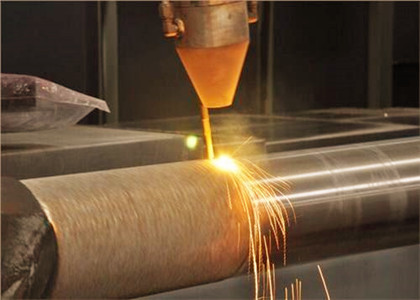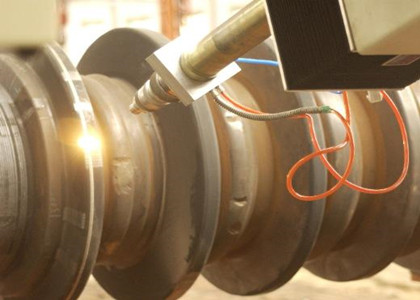Laser heat treatment of steel
Laser heat treatment of steel
Laser heat treatment of steel (laser heat treatment) is a metal heat treatment process that uses a laser beam to heat a thin layer on the surface of a steel material very quickly and perform surface modification. There are laser quenching, laser glazing, and laser melting (coating).


Laser quenching process
Laser quenching of steel is the most widely used laser heat treatment process in industry. The surface of the steel is scanned and heated with a laser beam with an energy density of 105W / cm2. The thin layer that is instantly heated to the quenching temperature completes the quenching process by self-cooling quickly after the light spot moves, and uses the residual heat for self-tempering. The hardened layer is generally within 1mm.
The advantages of laser quenching compared with traditional surface quenching (such as high-frequency induction heating surface quenching)
(I) Due to the high spot energy density, the surface temperature and cooling rate of the treated part are extremely fast, resulting in the formation of ultra-fine martensite structure on the steel surface, which greatly improves the hardness and tightness resistance of the steel surface.
(2) No quenching medium, no pollution at all.
(3) Because it is usually scanned only on the surface to be hardened, the quenching zone is band-shaped (composing various grids or patterns), and the surface is not fully hardened, so the overall deformation of the quenching is not only smaller than the overall quenching, but also far Less than ordinary surface quenching, such as high-frequency surface quenching. The most mature workpieces for laser quenching are cylinder liners, crankshafts, camshafts and gears of internal combustion engines.
Laser glazing
The surface of the gray cast iron parts is micro-melted and quickly cooled by laser to become a white mouth structure, which greatly improves the surface hardness and wear resistance without changing the overall mechanical properties of the cast iron parts. The finely ground steel rolls can be "brushed" with a laser to increase the bite ability; the thin layer of the blade of the high-speed steel tool can be hardened after laser treatment.
Laser melting (coating)
Laser surface melting (coating) coating The material to be coated is quickly melted by laser and coated on the surface of the workpiece. Simple coating can be used, or a transition layer can be formed to enhance the bonding force, or only a diffusion layer can be formed to slightly change the surface chemistry ingredient. This method can coat some refractory materials on metal, such as coating zirconium dioxide layer on titanium alloy, which has great application potential.




